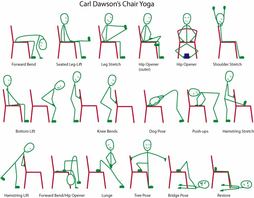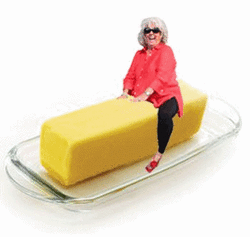 “Whether you think you can, or you think you can't--you're right.” ― Henry Ford Self-talk is that inner running dialogue we have with ourselves. It’s that voice that says, "You sure are handsome" or "You are going to have a great day". It might say, “You look like crap today" or "You sure have gained a lot of weight”. The voice can be positive and optimistic, or negative and critical. It can exaggerate, discourage, and drain our energy with ruminating thoughts or it can inspire and uplift and strengthen. Which voice will you choose? Our self-talk has a great influence on our emotions, actions, and ultimately our personality. To change our attitudes we must change the inner dialogue. Positive affirmations are a form of positive self-talk. By saying them repeatedly to yourself, you can make a direct impact on your subconscious mind, which eventually accepts them as reality. Positive affirmations challenge negative beliefs that undermine and replace them with positive self-nurturing beliefs. It is a kind of "brainwashing" only we get to choose which negative beliefs to wash away. Positive affirmation exercises have been shown to have a broad range of beneficial effects. They can buffer stress by reducing rumination in response to failure and our reactivity to social evaluation. Positive self-affirmation boosts our self-image, increase self-esteem and self-regulatory strength and enables one to transcend self-image concerns. They can help change harmful behaviors or accomplish goals, and they can also help undo the damage caused by negative scripts, those things which we repeatedly tell ourselves that contribute to a negative self-perception. For an affirmation to be effective, it needs to be present tense, positive, personal and specific. Repetition is also a key tool. To get started:
If you're interested in learning further techniques, check out Shad Helmstetter's book What to Say When you Talk To Yourself. What are your affirmations? It's a challenge to practice affirmation exercises regularly, but I try. As I just started a new job, one of my current affirmation is"I am strong and intelligent and will succeed at all I attempt". I also enjoys saying "Rejoice evermore", "I choose love here", and "I am at peace". Some great ones for weight loss include: "I accept my body shape and acknowledge the beauty it holds", "I am grateful for the body I own and all it does for me.", and "I love and care for my body". Remember, the mind is a powerful force: "We do not see things as they are, we see things as we are.” - Anais Nin
2 Comments
 I have not been practicing what I preach as of late, sitting a lot at my desk. As I wrote in a prior post, sitting is the new smoking in terms of harm to overall health. It’s associated with increased risk for heart disease and diabetes as well as weak core muscles and tight hip flexors and hamstrings. This week, I’ve been making a diligent effort to stand up while on the phone, take frequent walks around the office and ensure that I head out to a nearby trail on my lunch break. I also did a little office yoga session and am inspired to keep this going. Yoga is a centuries old tradition, combining movement with breath. It is a great form of exercise that reduces muscle tension, increases flexibility, muscle strength and tone, provides cardio and circulatory health, and can even boost immunity. I printed out the picture in this post that I found online and posted it to my wall. If you Google “office yoga” there are tons of great resources and PowerPoint presentations to give you even more ideas for simple stretches and strengthening exercises you can do from your desk and chair. Spread the word to your coworkers and let’s be the healthy role models we know we can be! Now…if I can only get a standing desk. That’ll be my next move. Also, check out this dope infographic by the Huffington Post: Your body on yoga  "With enough butter, anything is good." - Julia Child I thoroughly enjoy butter. Sauteing a mirepoix, on toast with ikrá (roe), cooking eggs, in baked goods….salty, sweet with its creamy mouth feel…delightful. But it has such a bad rap, doesn't it? The purpose of my blog article today is an attempt to redeem butter. Cardiovascular disease is the leading cause of death in the United States, claiming 631,636 lives in 2006 and accounting for more than 1 in 4 (26%) of all deaths that year. Risk factors for cardiovascular disease include high blood cholesterol, hypertension, diabetes, obesity/overweight, and poor diet. The role of butter -- and other high-fat dairy products -- in raising cholesterol levels is debated among scientists. Many mainstream nutrition authorities conclude that butter is bad for cholesterol levels. However, a recent review in the Advances in Nutrition journal conclude that though butter increases LDL (low-density lipoprotein aka “lousy”) cholesterol, it also increases HDL (high-density lipoprotein aka “healthy”) cholesterol and therefore might not affect or can even lower our total cholesterol ratio. Other research confirms that there is no significant evidence concluding that dietary saturated fat is associated with an increased risk of cardiovascular disease. Additional research even suggests bioactive properties of dairy fat and their role in reduced adiposity. Though daunting to read, Good Calories, Bad Calories by Gary Taubes is a great resource that addresses this low-fat conundrum and details the compelling case that refined carbohydrates are in fact the primary cause of weight gain and “diseases of civilization” such as heart disease, hypertension and diabetes. More about that in a later post. The jury may still be out, but I do not fear butter. However, before you start cooking Paula Deen style do understand that butter and high-fat dairy products are high in calories, which we all need to be mindful of for successful weight maintenance. One last note: not all butter is created equal. Mike’s Daily Apple did a great review of grass-fed vs. grain-fed butter regarding its health composition and taste. Grass-fed was the winner with a higher vitamin content, better fatty acid composition and better taste. Kerrygold is an example of grass-fed butter you can purchase at most grocery stores, in addition to Organic Valley Pasture Butter. Finally, it is also important to keep in mind that many toxins are stored in animal fat. According to the FDA, most human exposure to dioxins comes from food, with 95 percent of that coming from animal fats. Ahh…though I do love butter so, there is still a call to my favorite mantra about moderation. Enjoy your butter, buy good quality butter, but use it judiciously. |
AuthorHello and welcome! My name is Andrea Notch Mayzeles. I am a Certified Health Education Specialist, Mom, and Master of Public Health dedicated to the path of well-being. As a wellness professional I am committed to continued learning and am here to share research, recipes and musings on health, psychology, personal development, and parenting. I hope you enjoy! Categories
All
|

 RSS Feed
RSS Feed